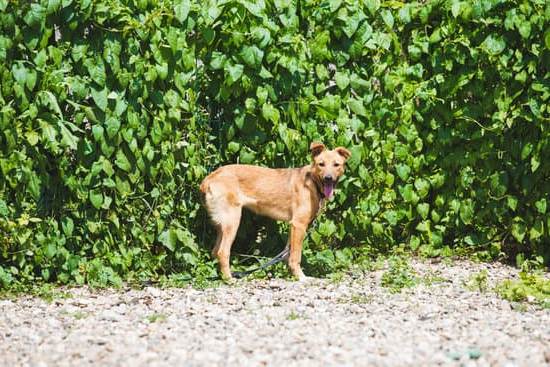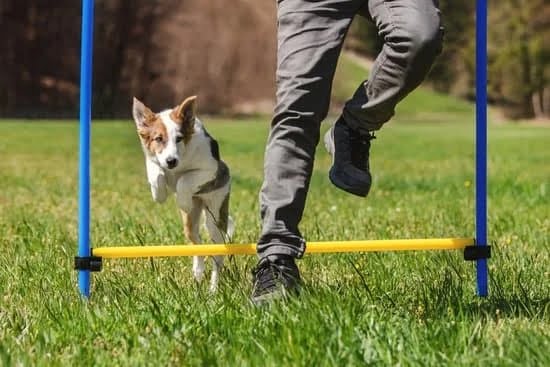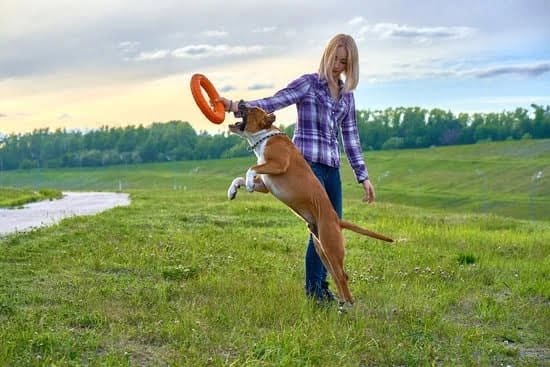Are you struggling with getting your dog to walk by your side? Training your dog to walk nicely on a leash is essential for both their safety and your enjoyment. In this article, we will explore the importance of teaching your furry friend to walk by your side and provide you with tips and techniques to make the training process a smooth and enjoyable experience.
Walking by your side is not just about convenience; it’s about establishing a connection with your dog. By learning how to train a dog to walk by your side, you can foster better communication and strengthen the bond between you and your canine companion. This skill also ensures that your walks are pleasant experiences for both you and your dog, making outdoor activities more enjoyable for everyone involved.
Understanding why dogs struggle to walk by our sides is vital in finding effective training methods. We will delve into the behavior of dogs during walks, exploring the reasons behind their pulling, reactivity, and distractions. By gaining insight into their behavior, we can tailor our training approach to address these challenges in a compassionate and effective manner. Stay tuned as we break down the basics of leash training, using positive reinforcement, consistency, advanced techniques, troubleshooting tips, and more.
Understanding Your Dog’s Behavior
Dogs are naturally curious and independent animals, which can sometimes make it challenging for them to walk by your side. It’s important to understand that a dog’s natural instincts drive them to explore their environment and investigate interesting scents, sounds, and sights. This can lead to pulling on the leash, darting after squirrels, or simply wanting to go in a different direction than you.
In addition, some dogs may have had previous experiences that make walking by your side difficult. For example, rescue dogs or those who have not been properly socialized may be anxious or reactive when out on walks. Understanding your dog’s specific behavior and the reasons behind it is crucial in addressing the challenges of walking by your side.
Furthermore, certain breeds have been selectively bred for traits such as chasing prey or herding livestock, which can translate into a strong desire to chase or explore during walks. Recognizing these breed-specific traits can help in understanding why some dogs struggle to walk calmly by your side and require additional training and patience. By understanding these factors, you can tailor your training approach to help your dog overcome these challenges and learn how to walk peacefully by your side.
The Basics of Leash Training
Leash training is an essential part of teaching your dog to walk by your side. It involves creating a strong foundation for your dog to understand the expectations while on a leash. The main goal of leash training is to teach your dog to walk calmly without pulling, lunging, or getting distracted.
One key aspect of leash training is using the right equipment. A standard leash that is about six feet long and made of nylon or leather is recommended. It’s important to avoid retractable leashes as they can encourage pulling and lack the control needed for effective training. Additionally, choosing a collar or harness that fits comfortably and securely on your dog is crucial for their safety and well-being during walks.
During leash training, it’s important to start in a quiet and familiar environment to reduce distractions. Begin with short walks and use positive reinforcement techniques such as treats or praise to encourage good behavior. Remember to keep the leash loose and maintain a relaxed posture yourself, as dogs are highly attuned to their owner’s body language.
Consistency is also key when building a strong foundation for leash training. Dogs thrive on routine, so establishing a regular walking schedule will help them understand what is expected of them. Over time, with patience and practice, your dog will learn to walk by your side calmly and enjoyably.
Using Positive Reinforcement
Training a dog to walk by your side can be a challenging task, but using positive reinforcement is an effective way to encourage good behavior and make the experience enjoyable for both you and your furry friend. Positive reinforcement involves rewarding your dog for exhibiting the desired behavior, which will encourage them to repeat it in the future. Here are some key tips for using positive reinforcement to train your dog to walk by your side:
- Use treats: Carry small, bite-sized treats with you during walks and reward your dog whenever they walk by your side without pulling on the leash. This will reinforce the idea that walking beside you is a positive and rewarding experience.
- Verbal praise: In addition to treats, use verbal praise such as “good job” or “well done” when your dog walks nicely by your side. Dogs respond well to positive human interaction and will be motivated to continue displaying good leash-walking behavior.
- Utilize toys: If your dog is more toy-motivated, consider using their favorite toy as a reward for walking by your side. Tossing the toy ahead of them and then rewarding them with playtime when they reach it while staying by your side can also be an effective method of positive reinforcement.
Consistency is key when using positive reinforcement during leash training. It’s important to reward and encourage good behavior every time it occurs, as this will help solidify the behavior in your dog’s mind. Remember that every dog is unique, so finding the right combination of rewards that motivates your specific furry companion is essential.
Incorporating positive reinforcement into your leash training routine not only helps teach your dog how to walk by your side, but also strengthens the bond between you and your pet. Keep in mind that patience, consistency, and a positive attitude are crucial components of successful leash training using positive reinforcement techniques.
Consistency Is Key
When it comes to training your dog to walk by your side, establishing a consistent routine is crucial. Dogs thrive on routine and structure, so creating a predictable schedule for walks can help reinforce the behavior you want to see. Here are some tips for establishing a routine for walking with your dog:
1. Set a regular schedule: Try to take your dog for walks at the same time each day, if possible. Consistency in timing will help your dog know what to expect and when they will have the opportunity to go for a walk.
2. Use the same route: While it’s nice to switch up the scenery from time to time, sticking to the same walking route most days can also help reinforce good walking behavior. Familiar surroundings can provide a sense of comfort for your dog and make it easier for them to focus on walking calmly by your side.
3. Pre-walk rituals: Establishing pre-walk rituals, such as putting on their leash or harness in the same spot, can signal to your dog that it’s almost time for their walk. This can help them mentally prepare and get into the right mindset before heading out.
By incorporating these consistency-building practices into your daily walking routine, you’ll be setting your dog up for success and helping them understand what is expected of them during walks. As they become more familiar with the routine, you may find that they are better able to walk calmly by your side without as much effort on your part.
Addressing Common Challenges
Understanding Pulling
One of the most common challenges when training a dog to walk by your side is dealing with pulling on the leash. Dogs naturally want to explore and move at their own pace, so it’s important to understand why they may pull. Some common reasons for pulling include excitement, curiosity, or simply a lack of leash manners. By understanding the root cause of pulling, you can better address this behavior during walks.
Managing Distractions
Another common challenge during walks is managing distractions. Whether it’s other dogs, squirrels, or interesting scents, many dogs struggle to stay focused when there are tempting distractions around. To address this challenge, it’s important to gradually introduce distractions during training sessions and teach your dog how to refocus their attention on you. This can be achieved through positive reinforcement and consistent training.
Dealing With Reactivity
Reactivity towards other dogs or people can make walking your dog a stressful experience. If your dog displays reactive behavior such as barking, lunging, or growling during walks, it’s essential to address this issue with patience and understanding. Training techniques such as desensitization and counter-conditioning can help change your dog’s negative association with certain triggers and promote calm behavior during walks.
By addressing these common challenges with patience and consistency, you can effectively train your dog to walk calmly by your side and enjoy stress-free walks together. Remember that each dog is unique, so it’s essential to tailor your training approach to suit your individual pet’s needs.
Advanced Techniques
Once your dog has mastered the basics of leash training and is able to walk by your side without pulling or getting distracted, you can start to work on advanced techniques to further improve their behavior. One important skill to teach your dog is how to focus and stay calm, especially in distracting or stressful environments.
One effective way to teach your dog to focus is through the use of positive reinforcement. By rewarding your dog when they are able to maintain their attention on you despite distractions, you can reinforce this desired behavior. Treats, toys, or verbal praise can be used as rewards, depending on what motivates your dog the most.
Another technique that can help teach your dog to focus and stay calm is desensitization. This involves gradually exposing your dog to increasingly challenging situations while helping them remain calm and focused. For example, if your dog tends to get reactive around other dogs, you can slowly introduce them to other dogs at a distance where they are still able to remain calm and focused on you.
Ultimately, teaching your dog advanced techniques such as focusing and staying calm requires patience, consistency, and understanding of your dog’s individual needs. Every dog is different, so it’s important to tailor your training approach based on what works best for your specific canine companion.
| Advanced Techniques | Teaching Your Dog |
|---|---|
| Positive reinforcement | Rewarding focused behavior with treats or praise |
| Desensitization | Gradually exposing the dog to challenging situations while maintaining focus |
| Patience and Consistency | Tailoring training approach based on individual needs of the dog |
Troubleshooting
Identifying the Root Cause
When your dog doesn’t want to walk by your side, it’s important to first understand why this behavior is occurring. Is it due to fear, anxiety, or a lack of training? By identifying the root cause, you can tailor your approach to address the specific issue and help your dog feel more comfortable and confident during walks.
Reassessing Your Training Methods
If your dog is resistant to walking by your side, it may be time to reassess your training methods. Are you using positive reinforcement effectively? Are you being consistent in your training approach? Sometimes, a simple adjustment in how you train your dog can make a significant difference in their behavior during walks.
Seeking Professional Help
In some cases, it may be necessary to seek professional help from a certified dog trainer or behaviorist. They can provide valuable insights and guidance on how to address the specific challenges you’re facing with your dog’s behavior during walks. A professional trainer can also offer personalized recommendations and techniques that are tailored to your dog’s unique needs.
Whether it’s addressing fear-based behaviors, reactivity towards other dogs, or simply stubbornness, troubleshooting when your dog doesn’t want to walk by your side requires patience, understanding, and a willingness to adapt your training approach as needed. Remember that every dog is different, and what works for one may not work for another.
Conclusion
In conclusion, training your dog to walk by your side is not only beneficial for you as the owner but also for the well-being of your furry friend. By understanding your dog’s behavior and using positive reinforcement, you can build a strong foundation for successful leash training. Consistency is key in establishing a routine for walking, and addressing common challenges such as pulling, distractions, and reactivity will help create stress-free walks with your dog.
As you progress in your training, advanced techniques such as teaching your dog to focus and stay calm will further enhance the walking experience. It’s important to remember that every dog is unique, so troubleshooting any issues that may arise along the way is crucial. Whether it’s utilizing different training methods or seeking professional guidance, there are always solutions to help your dog become a well-behaved walking companion.
Ultimately, celebrating your success in training your dog to walk by your side should be a moment of pride. Enjoying stress-free walks with your furry companion is a rewarding experience that strengthens the bond between you and your dog. With patience, consistency, and positive reinforcement, you can create enjoyable and fulfilling walks that benefit both you and your beloved pet.
Frequently Asked Questions
How Do You Train a Dog to Walk Beside You Without Pulling?
Training a dog to walk beside you without pulling involves consistent positive reinforcement and patience. Start by using treats to encourage your dog to walk beside you, rewarding them when they stay in the correct position.
Use a short leash and practice changing directions frequently to keep their attention on you. It’s important to remain calm and patient throughout the training process, as dogs respond best to positive reinforcement and clear communication.
Should a Dog Walk by Your Side?
Whether a dog should walk by your side depends on personal preference and the specific training goals for the dog. For some owners, having a dog walk beside them is a way to establish control and prevent pulling or erratic behavior.
However, it’s also acceptable for certain breeds or purposes (such as therapy or service dogs) to be trained to walk slightly ahead or with more freedom. Ultimately, the most important aspect is that the dog is under control and not causing any safety issues while on a walk.
How Do You Stop Your Dog From Walking in Front of You?
To stop a dog from walking in front of you, it’s essential to reinforce obedience and proper leash manners. Utilize positive reinforcement techniques such as treats and verbal praise when the dog walks in the desired position next to you.
Correct any attempts by the dog to move ahead with gentle but firm leash guidance paired with verbal cues like “heel” or “close.” Consistency in training and patience are key components of successfully teaching a dog to walk calmly at your side.

Welcome to the blog! I am a professional dog trainer and have been working with dogs for many years. In this blog, I will be discussing various topics related to dog training, including tips, tricks, and advice. I hope you find this information helpful and informative. Thanks for reading!





